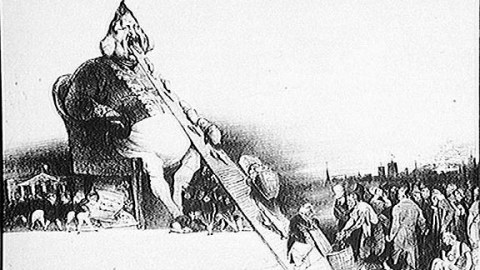Population Part 3: Why Malthus Was Wrong

For a few decades in the 20th century, it seemed as humanity’s triumphs of public health were turning into an ironic and deadly trap. Because more babies were surviving infancy than ever before, and more adults were safe from deadly diseases, the human race’s numbers were growing at a spectacular rate—from 2 billion in 1930 to nearly 4 billion in 1970, with the 5- and 6- billion marks just around the corner (indeed, world population reached 5 billion around 1986 and 6 billion around 1999). “Population control” policies swept the globe. Many thought that Thomas Malthus—the 18th century clergyman who held that “the power of population is indefinitely greater than the power in the earth to produce subsistence for man”—had been proven right.
Like many broad statements about general principles, Malthus’ argument feels as if it must be true, eventually (even if it’s off by a few decades or a few centuries). After all, it’s a logical observation about physical facts: the world’s resources aren’t infinite, and the laws of Nature make no special exemptions for Homosapiens. So there must be some limit on the number of people the planet can support.
But what is that limit? A general principle can’t say. It could sustain any estimate, from 100 souls to 9 billion (which is both the U.N.’s medium prediction for 2050 and the “nine thousand millions” that Malthus’ critic William Godwin proposed in 1820) to one quadrillion or so.
In the 1970’s Paul Ehrlich offered a proposal for finding the real limit, a formula known as I=PAT. The formula defined human environmental Impact as the consequence of Population (number of people), Affluence (the amount the population consumes) and Technology (how efficiently they use resources to create what they consume).
In the years since Ehrlich’s The Population Bomb, thousands more scientists and other researchers have closely studied relationships between people and their environment. “Certainly since the 70’s, when we had the modern resurgence of the Malthusian idea, we now have a lot better data,” Marc Levy, a political scientist who is deputy director of Columbia University’s Center for International Earth Science Information Network, told me last year.
This data has shown that A and T are just as important as P in the formula. Moreover, the relationships of the three variables — of population, per-capita consumption, and the efficiency with which people take resources from the environment — depend a great deal on local circumstances.
That means a very general statement about IPAT (like “the earth has too many people”) rubs away too many economic, political and cultural details; it ends up concealing more than it reveals. Last year, for instance, Paul and Anne Ehrlich argued that the 2 billion or so people who will be added to the human population in the next few decades “will have a disproportionately negative impact on our life-support systems.” One reason, they said, is that “our ancestors naturally farmed the richest soils and used the most accessible resources first. Now significant amounts of those soils have been eroded away or paved over, and farmers are increasingly forced to turn to marginal land to grow food.”
Compare that broad hand-waving to the first-hand knowledge of a particular place embodied by Charlie Teller, a long-time development worker in Ethiopia. In an on-line discussion of population issues in Africa in 2008, Teller noted that the parts of Ethiopia that need the most food aid are the ones with the lowest birthrates.
Then, too, Ethiopian deforestation has been worst in sparsely peopled rural areas; the crowded cities have the most tree cover. The reason: trees were chopped down during revolutions, when no government was on hand to enforce the law in remote areas. So while it seems intuitively obvious that Ethiopian forest loss stems from a biological cause (its people’s fertility), the real causes are political (in the inability of successive governments to keep order).
World food stocks offer another example of the difference between a vast generalization from general principles and a collection of patiently-gathered facts. Today one person in seven is chronically hungry (a point Ehrlich has made against critics who ridicule his predictions of mass famine in The Population Bomb).
But humanity isn’t even close to the limits of its ability to produce food. In fact, today’s agriculture could feed 10 billion people — if those people were vegetarians (meat requires much more agriculture land per unit of food than do plants). The world’s hungry suffer because they’re too poor, not because they’re too numerous.
Nobody, of course, expects hunger or climate forcing to vanish at the touch of a magic wand called “social change!” or “technology to be named later!” But you needn’t believe in miracles to see that the harmfulness of the P in IPAT depends greatly on assumptions made about A and T.
To the extent that environmentalists focus on population alone, they’re aiding and abetting, if only by inattention, in the assumption that A and T are constants that cannot be changed. At its extreme, then, an obsession with population is probably a net minus for the cause of sustainability: The more you encourage people to worry about too many children in some other part of the world, the more you help them forget about the too many appliances in their own kitchens.
Tomorrow: An example of this kind of misleading rhetoric.





